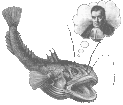UW Aquatic & Fishery Sciences Quantitative Seminar
Robin Waples
NOAA Northwest Fisheries Science Center
Temporal estimates of effective population size in species with overlapping generations
Robin Waples & Masashi Yokota
Abstract
The standard temporal method for estimating effective population size (Ne) Most species are iteroparous, and for these species Ne is particularly hard to calculate because it requires measuring lifetime reproductive success. Recent improvements in parentage analysis and single-sample genetic methods make it relatively easy to estimate Nb (effective breeders per year or time period); however, nobody has studied the relationship between Nb and Ne in iteroparous species, so it is hard to evaluate these results. We applied a recently developed, hybrid Felsenstein-Hill method (AgeNe) to life tables with vital rates for 63 species from seaweed and mosquitos to chimpanzees and pine trees and find that:
a) Nb/N varies widely (over 6-fold) across species, with broad overlap among major taxa;
b) for many species, Nb is larger than Ne (contrast with situation in semelparous species, where Nb<

